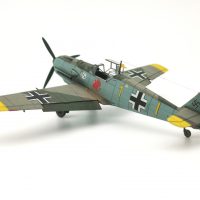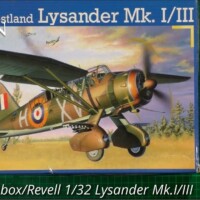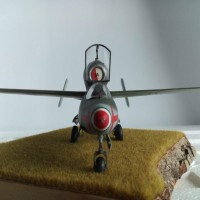Atlantis AH-56 Cheyenne
The Lockheed AH-56 was a 4-blade, compound attack helicopter developed in the 1960s to fulfill the U.S. Army's anti-tank gunship role (the Advanced Aerial Fire Support System, AAFSS program). The main motivation for the program was to ward off a massive tank incursion by Soviet/Warsaw Pact Nations into Western Europe. Engaged in Vietnam at the time, the Army was also interested in a dedicated fire-support platform for the UH-1 and other cargo/support craft. As the AAFSS program was drawing complex proposals, as a stopgap, the Army also pursued the Bell AH-1 Cobra as a jungle attack helicopter for use in Vietnam. Lockheed's Cheyenne proposal was chosen for the AAFFS requirement over the Sikorsky S-67 Blackhawk, and the Army ordered ten prototypes.
Technical difficulties and a vibrational problem, called half-P hop (a once-every-two propeller rotation instability, which caused the rotor blades to hit the tail boom and the cockpit, killing the pilot) delayed and stymied progress. There was also growing political tension with the U.S. Air Force regarding ownership of the close air support role: the AH-56 and like rotary-wing aircraft were seen as encroaching on this vital USAF function. Ultimately, the program was cancelled in 1972, and the U.S. Army initiated the Advanced Attack Helicopter program for a next-generation, advanced ground attack helicopter. Lockheed's proposal for this program brought forward many of the technological feats of the Cheyenne in its CL-1700, but it lost out to Boeing's AH-64 Apache.
The AH-56 Cheyenne had several unique features. It was a compound helicopter, meaning that it had added thrust and rudimentary wings to increase both speed and lift. It was fast, topping out at 200 mph. The thrust could be reversed on the pusher propeller to slow descent during dives to give the aircraft more time to fire on targets. And speaking of fires: the Cheyenne sat two operators in tandem, pilot in back and gunner in the front. The gunner's firing controls, sighting system, and seat sat directly above the gun, the whole assembly swiveling together as a unit; the gunner's sights were aligned with the turret via a periscope. This was ground-breaking technology that would find its way, much improved, into modern attack helicopters like the Apache. The aircraft could also accommodate a variety of rockets and anti-tank missiles on six underwing hardpoints, and the pilot could fire on targets independently of the gunner.
The Cheyenne is one of those aircraft that had many of the goods but just couldn't make it to primetime. Political friction aside, it seems to have taken just a little too long to make it through development, arriving just in time to be too expensive and too obsolete.
The Kit
The Atlantis 1/72-scale AH-56 Cheyenne is a re-box of the 1968 Aurora tooling. This is an old kit! The thick, dark green styrene is decently molded, but welcome to ejector-pin hell. I swear these things are everywhere, even right smack in the center of the goddamn windshield (left):
This can be either sanded down and polished away (right), or we can cut out the offending part of the canopy and replace it with some clear acrylic plasticard, as Roland Sachsenhofer does. I opted for the former, sanding up to 4000 grit and then using Tamiya's Polishing Compound.
Overall, the detail is minimal and the panel lines are thick, but the fit is good. This is the only readily accessible and, at around $20, relatively affordable 1/72 AH-56 offering: Anigrand has a kit selling for $68 (plus $10 S/H as of October 2024), and there are at least two other smaller-batch resin kits that will take some effort to locate. My experience with Anigrand tells me that it's unlikely to improve significantly on this kit.
Aside from the Gatling gun in the nose, there is no ordnance included, which is a bit of downer because this thing would look mean loaded with TOWs.
Decals are provided for two version of the helicopter, though this is not made clear in the instructions. The decals themselves were lovely to work with: thin and pliant but not delicate. On the other hand, the various warning and notification stencil markings are just lines that are meant to look like writing, but in actually look like nobody at Atlantis could be bothered to give a single c**p. Don't use these.
The color guide isn't specific, so I chose my own shade of green that approximated photographs: Tamiya Dark Green XF-61. Weathering included AK panel wash (Green and Brown camouflage does OK against these dark green shades) and an oil filter of tans, greens, and grays. Alclad Aluminum was used on all metal parts, with some light weathering with dark and light grays to simulate fading and grime.
I believe this kit can be made into something exquisite if one is willing to sand/fill existing panel lines and rescribe more delicate lines with more accurate placement, locate some after-market TOW missiles and rockets, and some accurate stenciling decals. Without these efforts, this basic kit still builds up to a fine representation of the AH-56.











Very cool subject and great skills to do it justice!
Thanks Neill. Appreciate that!
Nice! I did one of these awhile back, a fun build a bit primitive, yours came out great. I've some videos on the bird, very impressive flyer.
Thanks Robert! Yeah, I enjoyed watching some videos during the build.
Excellent result from the rudimentary Atlantis kit, Brian!
Excellent article, as well!
Thank you Spiros! Rudimentary is a good word for it!
Well done,Brian.
Thanks John!
Nicely done retro build!
Thanks Dan. Though not up to today's standards, I think this kit was probably very impressive in 1968!
This turned out beautifully, Brian @bapowellphys
An unknown helicopter to me, so thanks for sharing the background information, very interesting.
You're welcome John, and thanks! I hadn't heard about it either until I saw the kit on eBay. I love these prototype and proposal aircraft that never made the big time. Still lots to like about them!
Nice work, on a awkward-looking little duck!